Video Maker – Video Editor
Create engaging videos effortlessly with professional editing tools and effects.

- 2.1.18 Version
- 2.8 Score
- 4M+ Downloads
- In-app purchases License
- 3+ Content Rating
Video Maker – Video Editor simplifies the process of creating videos from photos, crafting slideshow videos, and proficiently editing videos.
- Simply select some photos, and let the app assist in producing a video, modifying it, or enhancing its photos using features like video transition effects, music incorporation, stickers, text overlays, frames, and more for your videos.
👉 Video maker
✯ Facilitates the creation of videos from photos, music, and transition effects.
✯ Enables the production of striking videos for sharing on various platforms like Tiktok, Instagram, Youtube, or Facebook.
✯ Offers over 50 free transition effects.
✯ Provides 10 sets of transition effect templates to streamline video creation.
✯ Includes 40+ unique dynamic effects for captivating videos.
✯ Generates videos tailored for social media sharing ratios.
✯ Enhances photo editing within the app for stunning visuals.
✯ Features powerful light filters for enhanced video quality.
✯ Allows insertion of text, stickers, and frames into videos.
✯ Supports video export in HD, Full HD, or QHD resolutions for seamless viewing and sharing.
💎 Video editor
✯ Presents beautiful animated effects for unique video customizations.
✯ Boasts 150+ filters for diverse video tones such as Legacy, Smooth, B&W, Vintage Cold, Warm, Duo Tone.
✯ Simplifies music integration into videos.
✯ Enables easy addition of text and stickers during video editing.
✯ Swift video exporting to save time and device storage.
🎵 Music Insertion
✯ Streamlines music embedding into videos.
✯ Allows blending of music in various formats like mp3, m4a, and more.
✯ Permits customization and cropping of favorite music sections for video inclusion.
✯ Facilitates adjustment of added song and original video volumes.
✂️ Video Cutting
✯ Quick video trimming capabilities.
✯ Supports cutting multiple video formats such as MP4, AVI, WMV, MKW, FLV, among others.
✯ Maintains video quality after cutting for further editing possibilities.
✯ Utilize cut videos for edits, effects, and music additions.
🔥 Video Speed
✯ Effortlessly convert videos into Slow Motion or Fast Motion clips.
✯ Compatible with various video formats.
✯ Preview video speed alterations before saving.
✯ Preserve video quality upon saving.
✯ Directly share videos on social platforms.
🎶 Audio Extraction
✯ Extract audio from videos seamlessly.
✯ Support for extracting audio from several input video formats including MP4, AVI, WMV, MKW, FLV, etc.
✯ Audio output in popular formats like MP3.
✯ Utilize extracted audio for new videos or existing video enhancements.
✯ Set extracted videos as ringtones or easily share them via social platforms.
- Video Maker - Video Editor emerges as a top-notch app for transforming photos into professional-grade videos, combining video making, editing, music integration, video cropping, speed editing, and audio extraction functionalities to cater to diverse artistic video creation needs.
About Video Maker – Video Editor
Video Maker – Video Editor is a video players & editors app developed by highsecure. The APK has been available since October 2019. In the last 30 days, the app was downloaded about 430 times.
It's currently not in the top ranks.
It's rated 4.49 out of 5 stars, based on 28 thousand ratings. The last update of the app was on August 29, 2024. Video Maker – Video Editor has a content rating "Everyone".
Video Maker – Video Editor has an APK download size of 41.65 MB and the latest version available is 2.1.18. Designed for Android version 5.0+. Video Maker – Video Editor is FREE to download.
Decide the Type of Video to Create
The first step of any creative project is to figure out what you want to make. Since, in this case, we’re talking about videos, you’ll need to figure out what type of video you want to create.
To choose the right video type, you’ll have to identify the purpose of your video. Why are you creating this video in the first place? What do you hope to achieve with this video?
Some possible goals for making a video can be:
- To increase brand awareness
- For training and onboarding of new hires
- To incorporate fresh intros and outros to older videos
- As a way to share presentations differently, as video
- To add countdown openers and final credits to live videos.
Let’s consider a few examples to help you understand this better:
- If you have a business that offers private mailboxes, and you want to show people why your services are different or better, an explainer video might be the right choice for you.
- If you run an e-commerce store selling sporting goods and you want to announce an upcoming sale to your customers, a video ad would be a good choice.
- Maybe you’re a chef and want to grow an audience that will one day buy your cookbook. You’ll most likely need to create a how-to video showing one of your recipes.
Let’s look at some of the most common types of videos and some examples for inspiration.
1. Explainer Videos
An explainer video is a type of video that aims to explain something to the viewer. How-to and tutorial videos also explain something, but the difference lies in the details.
Explainer videos tell a story to explain a concept, or visually demonstrate an idea or analysis. Tutorials and how-tos, on the other hand, give instructions on how to do a specific thing.
Explainer videos are great for explaining a brand concept or showing how a company’s offerings solve specific problems. These are high, top-of-the-funnel content types that help increase brand awareness and form initial visual contact with the consumer.
You can create an explainer video in different styles; live-action, animated or a mix of both. The animated video style, however, has been particularly trendy the past few years, especially among small businesses and SaaS companies.
When to Use an Explainer Video
The best place to use a video is a landing page that showcases your brand or product. Landing pages are where new customers and audiences find products or services they’d like to try.
An explainer video on a landing page is the best way to let them know what the brand is about while telling a story they can relate to.
You can also share your explainer video on YouTube, Facebook and other social media platforms, with accompanying copy that speaks to the people at the top of your funnel.
2. How-To/Tutorial Videos
There’s no better way to explain how to do a specific task or activity than with an educational video. In 2020, 82% of global viewers used YouTube to learn a new skill or hobby. How? With tutorial videos, of course.
Here’s an example of a how-to video from B&Q — a company that sells DIY home improvement products.
The best how-to or tutorial videos are easy to understand and follow along with. If it leaves the viewer confused, your how-to video will be a bust. Take your time with the planning phase of these videos; they have the opportunity of getting you lots of subscribers and potential clients.
When to Use a How-To/Tutorial Video
Tutorial videos are great for both new and returning clients. Here are some examples of how brands, companies or individuals can create tutorial videos.
An electronics e-commerce store creates tutorial videos on how to troubleshoot appliances.
A plumber has a YouTube channel with videos showing how to do easy home plumbing repairs.
A chef shows his best recipes and how to make them in a set of tutorial videos.
An SEO specialist creates a course with 6 tutorial videos showing how to optimize a website.
A SaaS company creates tutorial videos for their knowledge base, using real customer questions as ideas for the videos.
If there’s anything you offer that could warrant a tutorial video, you should consider making one. When the same “how-to” question is asked frequently to your customer success specialists, make a video answering the question and showing how to do whatever they need help with.
Here’s a product tutorial video template you can use:
3. Brand Awareness Videos
Brand awareness videos are similar to explainer videos, but go one step further. Like an explainer video, a brand awareness video tells a story. But unlike the explainer, it delves more into emotional territory instead of showing how the brand solves a problem.
Unlike an explainer video, this video focuses on the concept of self-love and perception. While this video doesn’t talk directly about Dove and its products, it helps build and strengthen Dove’s image of a caring brand that values authenticity and promotes self-esteem.
The story a brand awareness video tells is more about how the brand makes the user feel than what the brand does. This can be done with emotional storytelling that shows how the brand can change a life, a perception or an idea.
Think of it this way — brand awareness videos break barriers between advertisement and storytelling.
When to Use a Brand Awareness Video
Brand awareness videos are sometimes used as advertisements, where the brand name only shows up at the very end. Or, it can be a social media video of how a brand is helping change something that is systematically wrong. It can also be an emotional documentary of a conducted study or a fictionalized situation that makes you think twice.
Use brand awareness videos once your brand is established and is easy to recognize just from the logo. These types of videos are better suited for customers who are already aware of your brand, and have the potential to become loyal and emotionally connected to your brand.
These people are more likely to share your brand awareness videos with their friends. If done well, your video might even go viral, and maybe an online publication will pick it up and share it in an article.
Since brand awareness videos can help build, enhance or even break down your brand image, they should not be created lightly; they must be timeless, essential and relevant.
4. Video Advertisements
The sole purpose of an advertisement video (or video ad) is to convert. The visuals, the copy, the story and the sounds must all be selected with one thing in mind — selling.
Regardless of what you’re promoting on the ad; a free webinar, a new product or a sale, the idea is that people will see it and click on the link, or scan a QR code.
The action Apple wants you to take after watching this video ad is obvious — click on the link in the description, learn more about the product and possibly buy it.
Depending on the platform you’ll share it on, an ad video can be as short as 15 seconds or as long as a couple of minutes. A TV commercial is usually around 60 seconds, a social media ad around 15 seconds, a YouTube ad is about 20 to 30 seconds.
When to Use a Video Advertisement
Video ads are essential for sales and promotions. Online ads already cost money to publish, so why not make them truly eye-catching? That’s where videos come in. According to DataBox, 60% of marketers have found that video ads do better than static ads on Facebook.
Video ads are perfect for YouTube ad placements and TV commercial spots. These might cost a bit more than a Facebook ad with a small target audience, but they will get you more exposure.
Simply put, if you have something that needs promoting, create an advertisement video for it.
Below is a bite-sized video ad template you can use for your own brand. Customize it, download it and share it on social media.
Pro-tip: Looking for more video ad templates? Head over to our template library and browse options for Facebook video ads, Twitter video ads, Instagram video ads, bite-sized video ads and more.
5. Testimonial Videos
Testimonial videos are an excellent way of using customer feedback and going beyond the ordinary. A video with actual footage of the person talking will have more impact than a graphic with a quote in it.
There are a few ways to grab content for testimonial videos:
- You partner with a user or customer and shoot the footage yourself.
- The user or customer films themselves and sends you the footage.
- The user or customer records an audio and you turn it into a video using pictures and text.
- You collect the best-written reviews from your website or social platform.
Even if you can’t get your hands on actual footage or audio of your customer talking, you can always turn their written reviews into testimonial videos.
How? By using animated testimonial video templates like the one below:
When to Use a Testimonial Video
You can use testimonial videos at any point in the customer journey or funnel. At the top of the funnel, you can include them in landing pages.
Further down, they can be inside emails. And even further down, customer success specialists can send the testimonials to prospects about to sign a huge deal with you.
6. Training and Onboarding Videos
Training and onboarding videos do just that — train and onboard new employees. These are not videos you create for marketing or brand awareness; they’re for your staff and new hires. Training and onboarding videos highly resemble tutorial videos with a more human element.
Here’s an example of an onboarding video from Grubhub:
The video above was created to onboard new drivers. It’s a great example of how you can help new employees familiarize themselves with the SOPs in a non-boring, personalized sort of way.
When to Use Training and Onboarding Videos
These videos will help your company thrive from the inside out. You’ll need onboarding videos for new hires and training videos for both new and existing employees, depending on their skill level.
You can show these videos during onboarding sessions, training sessions, seminars and workshops. You can also distribute them digitally via email, or embed them on your website or portal for new employees.
7. Entertainment Videos
All the videos above have some sort of purpose, such as marketing, brand awareness or internal communications. But let’s not forget the videos that are purely for entertainment.
These include vlogs, behind-the-scenes clips, animated quotes and even TikTok dance videos!
San Diego Zoo, for example, posts entertaining videos of animals on TikTok that people love to watch and share with their friends.
If done well, entertainment videos can also help you generate brand awareness by getting more eyeballs on your brand and social media profile — especially if your funny or entertaining videos go viral.
When to Use an Entertainment Video
Use entertainment videos when what you need to do is entertain — it’s that simple.
These videos are also great for beginners just getting started with video production and want to practice creating a great-looking video. Brands usually publish entertaining videos on social media platforms like TikTok and Instagram stories.
8. Video Presentations
A video presentation is essentially a slide deck turned into a video. Turning your presentations into videos is a great way to make them more shareable and engaging.
People would rather watch a 3-minute video than flip manually through an embedded slideshow, especially if there are animated elements, cool transitions, GIFs and other elements on the slides.
When to Use a Video Presentation
Video presentations are ideal when you want to share a presentation with someone but want to make it easy to see. With a video presentation, you avoid the hassle of having to go slide to slide.
Brands can also make video presentations as educational content that’s more engaging than a normal PowerPoint presentation or a boring lecture.
Here’s a video presentation template you can use:
9. Video Intros and Outros
Not exactly a full video type, but something to consider are intros and outros. These are the clips that open and close your videos. They carry your branding, message and personality.
You can make all your videos have the same intro and outro template and only change the title of each video. If you already have finished videos but want to revitalize them, add new intros and outros.
When to Use Intro and Outro Videos
When creating videos for YouTube, you’ll need intros and outros. Most specifically, outros with YouTube format for adding related videos and subscribe buttons.
Choose a Topic for Your Video
Great, now you know what the purpose of your video is and what type of video you’ll make. The next step is to start looking at the details, most specifically the topic.
Let’s use the same examples as above:
- The private mailboxes business could show in an explainer video how the mail is handled and the steps and procedures to safeguard the users’ privacy.
- The sporting goods e-commerce store can advertise their Black Friday Sale and include images and videos of the specific products that will be on sale.
- For the chef’s how-to video, they can choose a specific recipe or a series of recipes in a particular style or for a specific purpose. For example, they could make a how-to video for snacks for a birthday party.
- The blogger repurposing content can select their best blog post about the 10 ways digital marketing can improve your ROI and turn the information into a video presentation.
Make sure you pick a topic that your audience actually wants to watch a video about.
You can dig deeper into your audiences’ needs by listening to social media conversations, checking out competitor content and identifying gaps, conducting surveys, and analyzing your own sales and previous marketing campaigns.
The topic you choose for your video will be the basis for all the content that will need to be laid out as preparation, like the script and the visuals.
But there’s one more step before we get to that — choosing the video style.
Select a Video Style
After deciding on the video type and topic, it’s time to choose the best style for your video. Does it have people talking or acting out scenarios? Or is it animated characters playing out a story? Maybe it’s a claymation video like Wallace and Gromit.
The video style you choose must be relevant to your story, visual brand voice, and audience. Many videos in most of the types mentioned above use a mix of different styles.
Most commonly, live-action is mixed with animation or motion graphics. Screengrab scenes need live-action support scenes, and the list of combinations goes on endlessly.
There are no rules to what level of video style mix your video needs, just make sure it follows a storyline from beginning to end, makes sense, and the transitions are smooth.
Let’s take a look at each video style and some examples.
1. Live-Action
Live-action videos are those that have people in them — for example, re-enactments of events, interviews or footage of a person doing something while they explain it.
Here’s an example of a live-action video:
Some types of videos are best with live-action instead of animation. These include cooking videos, exercise and workout videos, personal interviews and tutorials.
2. Animation
Animated videos can be made in any of the various animation styles, but the two major types of animation styles include 2D and 3D animation.
2D animation is technically flat but can have a feeling of depth with textures and shading. Here’s an example of a 2D animation video.
3D animation is more like motion picture animation in that it mimics reality but is animated. Below is an example of a 3D animation video.
When it comes to selecting with animation style to use, it usually comes down to cost. 2D is less expensive than 3D and also takes a lot less time to achieve.
Stop Motion
Stop motion is a style of animation that’s done with physical objects that move around in a scene. The trick to stop motion animation is to take a photo per minimal movement of the object; then, when you put them together, it seems to be moving.
Here’s an example of a video that uses the stop motion animation style:
Stop motion styles are done with regular items that seem to move on their own. The smoothness of the motion will depend on how many photos or scenes you take before putting it all together.
Using this technique, animators can also create characters with clay and make them move and interact with each other to tell a story.
Use stop motion or clay motion only if your brand style has a fun and easygoing angle. Corporate videos might not be the right opportunity for stop-motion.
Motion Graphics
Another animation type worth mentioning is motion graphics. These are animated elements on a scene that support the audio context, but don’t tell the story themselves.
Here’s an example of a video that uses 3D motion graphics:
You can do quite a lot with motion graphics and turn a seemingly boring presentation into a visually engaging experience for your audience.
3. Screen Recordings
Video screen recordings are common in tutorial videos for tasks done on a computer. The same applies for gaming videos. When the viewer needs to see your screen to understand what you’re talking about, you’ll need to take screen recordings, or screengrabs.
Here’s an example of a screen recording video from Elegant Themes:
Once you’ve recorded your screen, you can upload the screengrab footage and edit it with other scenes like you introducing the video or an animation opener. Up to you!
Screen recordings are mostly used for tutorials and walkthrough videos as they help the viewers understand and replicate the exact steps or actions needed to solve a problem or complete a task.
4. Mixed Media
Not every video is made up of only animation or only live-action — sometimes, they are mixed.
Here’s an example of a video from Dollar Shave Club that uses mixed media — live-action, text, images and motion graphics.
There are different ways to mix media in a video, such as:
- A live-action video with motion graphics on the forefront showing titles or supporting visuals.
- An animated video with a live-action introduction.
- A screengrab tutorial with interview style live-action between scenes.
- A stop-motion video made with people instead of objects.
Using mixed media is a great way to improve the effectiveness of your video, change the pace and keep things engaging throughout.
Write a Video Script
The next step is to write the script for your video. This will be the master document that includes everything that will go into the final project. The depth and complexity of your script will depend on what type and style of video you’ll be making.
Here are some tips on creating an effective video script:
1. Include Directions
Scripts are not just a story put on paper so that it can then be turned into video. It’s also about how you want to tell that story. This means you need to have directions for the animator, videographer, actors and anyone else involved.
Include explanations about how you want the scene to look or how the people should be dressed. If you’re making the video on your own, you’ll still need some direction to help you while creating it.
For example, let’s say you’ll be making an animated ad for Facebook. What do you need to have ready before you start?
- Copy
- Visuals
- Background
- Music
But…
- Do you want the copy to enter the scene and have a text effect?
- Will the visuals be static after they appear or will they have a subtle floating animation?
- Do you want to use only brand colors, or do you want to use other colors?
- Is the background static, or does it have an animation or motion graphics element?
All these details need to be in the script.
Let’s take another example; this time for an interview-style video. What are the things that need to be in your script?
- The names of the interviewees
- Questions to be asked
But…
- Where will you record the interviews? Indoors in their home or office? Or outdoors, walking or standing?
- What should they be wearing?
- Will the questions be included in the video, or only the answers?
Remember to include as much relevant information as possible in your script. This will give you direction on how to shoot and edit your video later on.
2. Use Storytelling Techniques
Your video should tell a story with a beginning and an end — the script is what outlines that story in a scene-by-scene format. Use storytelling tactics to help you format the content in a way that will flow and be easy to understand.
Check out our video above on presentation format styles. It's all about using storytelling techniques in presentations, and the same concepts apply to videos.
3. Be Succinct
A script is no place to get over wordy or fluffy. The idea is that your story is told succinctly and to the point. If there are people that have to act things out in the video, write what they need to say or do in detail.
4. Be Entertaining
Inject an entertainment factor into your script. If you don’t grab the attention of your audience in the first two seconds, you’ve lost them.
5. Show Off Your Brand’s Personality
The story in your video needs to show off your brand personality. This applies to everything in your video, from the copy to the background music.
6. Use a Scene-by-Scene Format
As you’ve seen above, the script is made of both the story and the instructions. That’s why it’s best to format it as an outline, with every section being a scene.
For example, this is what a script may look like for a cooking tutorial video:
Scene 1 - Opener/Intro
- Logo animation with music
- Title of the video
Scene 2 - Instructor welcoming the viewer
- Person is standing behind a kitchen counter wearing an apron. The kitchen has daylight coming in from a window.
- “Welcome to my channel! Today we’ll be cooking lasagna just like my Nana makes it.”
Scene 3 - Ingredients camera pan
- Camera at bird’s eye view pans over the elements on the table
- “You’ll need the following ingredients. Pasta, tomatoes….”
Scene 4 - A bit of background story
- Cook tells a story of their Nana and her lasagna
- First person of the cook talking
Scene 5 - Photos of Nana
- Old photos of Nana and the cook as a child
- Voice over of the cook telling the story
Scene 6 - Start cooking
...
Scene 7
…
You get the idea.
Create a Storyboard
With the script in hand, it’s time to start visualizing a storyboard. A storyboard helps to start visualizing what your video will look like when it’s finished. Think of it as the first rough draft.
Remember, storyboards are not meant to be overly designed or produced; they are practical tools to help you out when it’s time to make the actual video.
Suppose you need to present the idea of your video to stakeholders before actually making the video. In that case, you can brand the storyboard and put a bit more effort into the design. When presenting at the meeting, Don’t forget to use your storytelling skills when pitching your idea!
This step is for videos that include live-action footage of people talking or playing out scenes. The same applies for stop motion videos.
When recording your video footage, avoid long takes. Create clips of a few minutes each at the most; this will make it easier to trim into scenes later.
Use the storyboard to help you shoot the scenes in order. If the scenes aren’t recorded in order, take notes of the order you record the scenes to avoid confusion later.
Take a cue from the film industry and use a “clapperboard” to show the camera what scene you’re about to shoot.
Edit Your Video
You’ve done all the preparation work, and now it’s time to put it all together. The best part, in my opinion, is editing your video.
You can take any kind of footage you have and turn it into an engaging experience for your audience simply by using the right editing tools and techniques.
Let’s take a deeper look at the all the nitty gritties involved in editing your video:
1. Choose a Video Editing Tool
The first thing you’ll need to make your video is the right tool or software. There’s plenty of options at different levels of complexity, ease of use and cost.
Pro-tip: Check out our video editing software comparison guide if you’re looking for options and want to compare features and capabilities of some popular tools out there.
2. Organize the Content
Once you’ve chosen a video editing tool, the first thing you need to do is get organized.
You’ve already got the script and storyboard to help you follow a process and stay true to the story you want to tell. Now, it’s time to organize any raw footage, audio or photos that you want to include in your video.
Put together everything into a folder and make sure you’ve named the files so they’re easy to identify and distinguish from each other. Video asset management software can come in handy at this stage, as it allows you to easily organize and search for all the videos (and their revisions) that you've stored.
3. Choose a Template or Start From Scratch
You can start creating your video from scratch using a blank canvas, or start with a pre-designed template. Most tools have ready-made video templates to choose from.
Our designers have created a wide variety of video templates for you to use if you’re looking to get a head start on the design. Select from ads, explainer videos, listicle videos, social media videos, testimonial videos, intros, outros and more.
When selecting a template or even a custom size blank canvas, you need to make sure you’re starting with the right dimensions, or aspect ratio.
How to Choose the Right Aspect Ratio for Your Video
The aspect ratio of a video or graphic is the shape it has, independent of its size. This will depend on where you plan to publish and share your video.
Customize this infographic template and make it your own!Edit and Download
The graphic above shows you the optimal aspect ratio for some popular social media platforms. Using the right aspect ratio is crucial as it can impact user experience and ultimately the success of your videos.
For example, you might need a horizontal video for YouTube, but for TikTok, Instagram Stories and Instagram Reels, you’ll need vertical video.
4. Upload Content
To create a video efficiently, you’ll have to upload all your content into the tool first. That way, you’ll have everything on hand to start editing.
5. Set Up Your Scenes or Slides
Videos, like movies and films, are made up of scenes. When editing a video, you go scene by scene, making sure they tell your story correctly.
Some tools have timelines that show the complete video; others show timelines per slide. For tools with one timeline, you’ll have to insert all your clips in the correct order.
Here’s a simple rundown of the essential scenes to include in your video:
- Intro (opening sequence)
- Storytelling scenes
- Section titles
- Storytelling scenes
- Outro (closing sequence)
The slides should mirror your storyboard, so if you’re using a template, there will be some adjusting on your part.
For the slides that aren’t in the template, duplicate one and move things around to make it a bit different from the original. Otherwise, just add a new slide where you need it.
With all the footage or photographic content uploaded to your media library, you’re ready to start building the scenes.
6. Add Videos and Photos
Now, it’s time to add videos and photos to your video. In tools with one timeline, add all your content in the order it will appear.
Every video clip, yours or ours, has customization options in the top bar under ‘Settings.’ The options include:
- Show Control Bar
- Muted
- Auto-Play
- Looped
Trim Clips of Video Footage
If you have footage of live video, interviews, recorded scenes or videos from our library, you’ll likely have to trim extra bits that you don’t need. The same applies to any video clips you selected from the tool’s video library, if it has one.
7. Add Backgrounds
Some of your slides will have only video, and maybe some graphic elements layered on top, but other slides might be different. For these slides, you need to sort out a background.
A background can also be a video. Consider having a color overlay so the background doesn’t interfere with the content on top but still keeps things interesting on scenes that could otherwise feel too static.
8. Add Text or Content Blocks
Next, add all the text you need in your video. Remember that this will be a video, so don’t overload the scenes with text. Try adding text in a large style so it’s easier to read and don’t forget the most important font pairing rules:
- Use your brand fonts if you have them
- Don’t use more than two fonts
- Try and use one font only, using bold as a differentiator
Included in that toolbar is a folder where you can keep your own custom content blocks. You can create these any time you’re working on a project, and a group of items is worth keeping to use again in another project.
9. Add Design Elements
After finishing the text, it’s time to add relevant design elements. Some tools offer a variety of design elements, while others will need you to upload them. Add these design elements to your video timeline and adjust with the rest of the content.
Plus, you can also access a wide selection of animated graphics. The most fun are the animated characters, from humans to robots and even cartoons.
All of them are customizable in terms of color, pose and repetition of animation. Use them as small supporting characters or turn them into the main element of the scene. Anything is possible!
Additionally, there are animated icons, illustrations, shapes, gestures, special effects and avatars. Every single one is customizable in terms of color and repetition of their animation.
Use what you need to tell your story and add visual richness. Just don’t overdo it.
10. Balance the Colors
Before you move on to the next steps, take a look at the colors on your video. Are they well-balanced and harmonious? Is every design element in the same color palette?
Otherwise, you can change the colors manually until you’ve reached a good color balance. Either way, stick to a color palette made up of at most seven colors on all the slides.
11. Finalize the Animations
Now it’s time to concentrate on the animations in your slides. Check the timing of each movement, adjust the flow between animated objects and create a good visual balance to tell your story.
To animate text or any other element that is static on the screen, click on the ‘Actions’ button and use the custom animation controls along with the timeline to make it perfect.
Use the ‘Present’ button on the top right to check how the animations will look in the finished slide. Make sure everything flows smoothly and isn’t jerky or off place.
12. Edit the Transitions
The next step after the animations is to edit the transitions between scenes.
You can also adjust the timing for the transitions. For the slides with a video in them, choose ‘After video play’ or a specific amount of time. You can apply one transition to all slides or to specific slides you’re working on.
13. Add Audio
One proven way to make your video more engaging is to add audio in the background. Tapping into both the auditory and visual senses of your audience simultaneously can help you deliver your message more effectively.
Background Music
Add a background music track to your video to give it depth and “set the mood.”
Adding background music is a good idea when you have lots of slides with animated text effects and no scenes of people talking. This option is for adding one music or audio clip to the entirety of the video project, meaning all your slides/scenes at once.
You’ll find this option in the hamburger menu on the top left of the editor, under ‘Publish Settings’ and then ‘Sound.’ There’s several customization options inside this tab. From volume controls to fades and timing.
When you have background music, it will play underneath any other sound clip or video with sound that you add to any slide.
One Sound Clip Per Slide
Your other option is to add sound clips or music to specific slides. Upload your own or use one from our media library. To add it to your slide, click on the selected clip. You’ll find customization options in the gear icon when you hover over the clip on the list.
To trim the audio clip, use the timeline at the bottom of the screen. Use the drag bar in the green audio file to set the trim of the audio. Click and drag the section to fit in the part of the slide that you want the audio to play. You can have one audio clip per slide.
Record a Voice Over
To record the voice-over, click on the microphone icon on the bottom left of the timeline and speak into your microphone. The editing options are the same as an audio clip. You can trim the voice-over, customize the volume and the fades.
Preview and Make Final Edits
You’re almost done!
Before you move on to the final step, you have to preview and edit your video to make sure it’s the best it can be. Watch it with your team members and take notes on things that need improvement.
Next, make all the necessary edits and you’re ready to share.
Congratulations, you’ve just created an awesome video that you can share with your audience and make an impact. Let’s take a look at all the different ways that you can share your video.
But there are also other ways to share your video, such as sharing it in an email or on your favorite social media platform. Let’s look at all your options in detail.
1. Download as an MP4 or HTML5 File
Your first option is to download your video.
2. Share as a Live Link
There’s another option apart from downloading that you might not have thought of. I’m talking about sharing your video as a live link.
3. Share on Social Media
To share on YouTube, you’ll have to first download the video as an MP4 file. You can then easily upload it to your YouTube channel.
Screenshot of a share of one our YouTube videos:
When sharing on other social media platforms, you can either upload the MP4 file, share the YouTube link.
4. Send in an Email
Sending an email with a video in it is great for engagement. The way you add a video to an email will depend on your email provider.
5. Embed into Your Site
One more option for sharing your video is to embed it directly into your website. Once you’ve published your video to the web inside the share options, you’ll be able to grab a snippet of code. This code will embed the video into your site.
This video works just like a live link; if you change anything in the original project, it will also reflect in the embed.
Make Engaging Videos That Your Audience Will Love
If you ever considered that you needed to get started with video but weren’t sure, now is the time to take action. Video marketing has become the top content strategy for every layer of your marketing funnel.
Even though there are plenty of tools available to create videos of different types and styles, hardly any offer the scope of possibilities.
- Version2.1.18
- UpdateSep 29, 2024
- Developerhighsecure
- CategoryVideo Players
- Requires AndroidAndroid 5.0+
- Downloads4M+
- Package Namecom.highsecure.videomaker
- Signaturea845c23276ad00f4ec1a80290acb42a6
- Available on
- ReportFlag as inappropriate
-
NameSizeDownload
-
44.99 MB
-
64.42 MB
-
64.42 MB


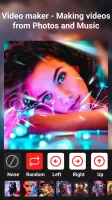

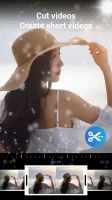
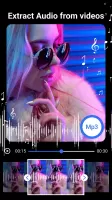


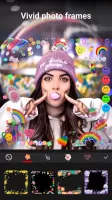







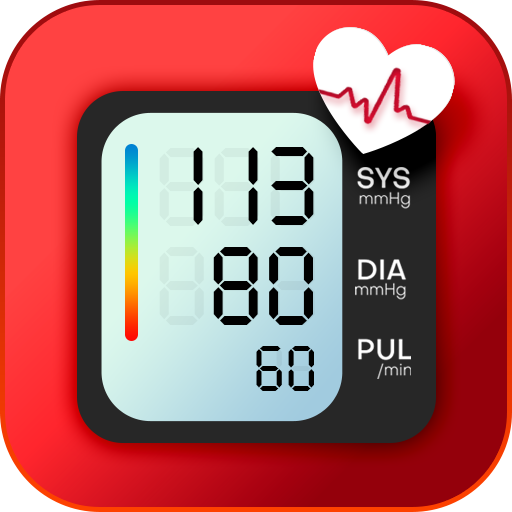
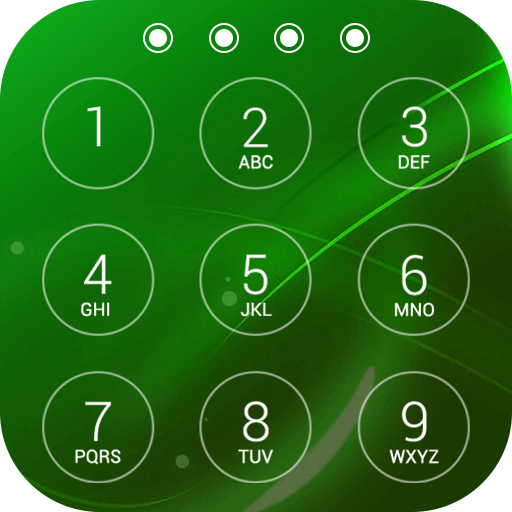







most especially the effects & the transition
Easy to use
no data, no payment
background music option suggested
cannot set the time for transition